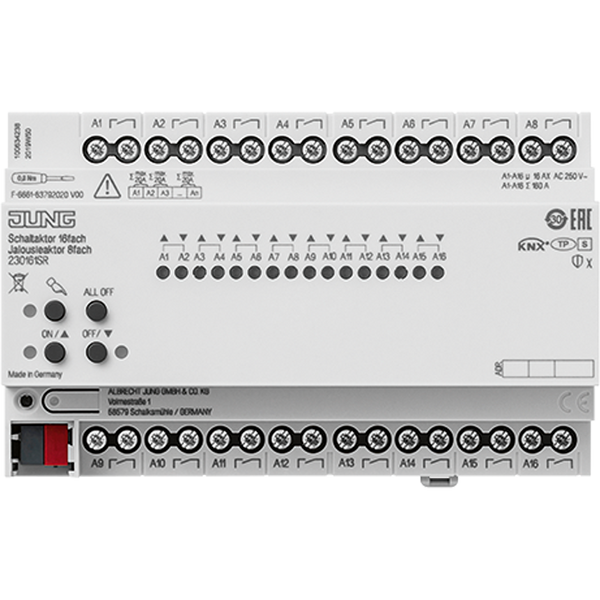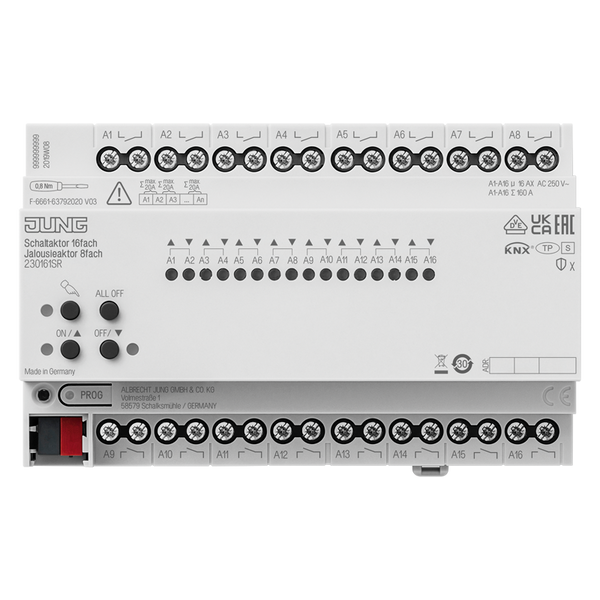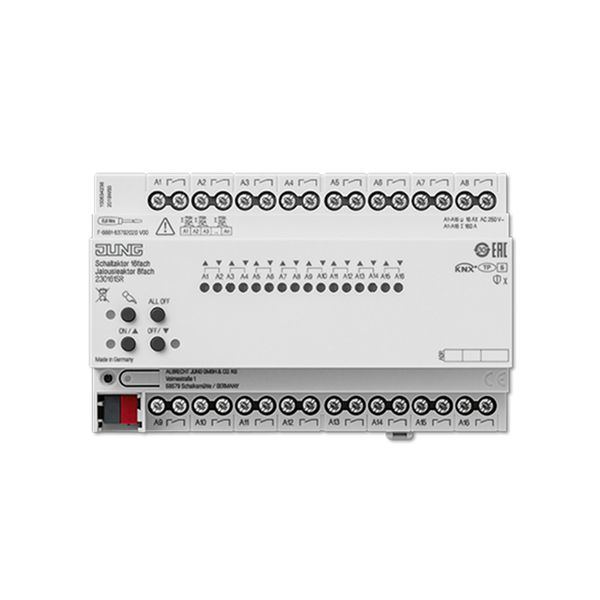Register to unlock your exclusive B2B prices and start shopping. Sign up now!
Switch unit KNX switch/blinds actua 16/8-g
Order only
Price (excl. VAT):
349,93 €
EAN: 4011377179127
MPN: 230161SR
Box: 1
Estimate delivery time at our warehouse (approx.):
4-6 weeks
Technical Information
| Item condition | New |
| Manufacture name | Switch unit KNX switch/blinds actua 16/8-g |
| Brand | Jung |
| Categories |
Bus System Devices (KNX/Modbus)
|
| Country of origin* | DE |
| * The actual country of origin may differ depending on the delivery batch. To confirm the specific country of origin, please contact your account manager. | |
| Harmonized System Code | 8537 1091 00 |
| Mounting method | DRA (DIN-rail adapter) |
| Bus system KNX | Yes |
| Bus system Powernet | No |
| Max. number of venetian-blind outputs | 8 |
| Width in number of modular spacings | 8 |
| Local operation/hand operation | Yes |
| With switch function | No |
| With LED indication | Yes |
Packing details
| Packing level 1 | 4011377179127 |
Other Technical data
| Type of current | AC |
| Number of inputs | 0 |
| Bus system radio frequent | No |
| Max. switching power | 3000 W |
| With bus connection | Yes |
| Switching current (resistive) | 16 A |
| Bus system LON | No |
| Bus system KNX radio | No |
| Radio frequent bidirectional | No |
| Bus module detachable | No |
| Min. depth of built-in installation box | 0 mm |
Downloads
Description
This unit is a KNX-based switch/blinds actuator designed to control up to 8 venetian blind outputs with precise AC switching functionality.It integrates smoothly into smart bus systems for automated power management and shading. DIN-rail mount installed (DRA adapter).Width spans 8 modular spacings.Switching current rated at 16 A, resistive, max switching power of 3000 W.Features local manual operation capability.LED indication present for operational status signaling.Compatible exclusively with KNX bus system;supports no other protocols or radio frequency interfaces—non-detachable bus connection integrated directly into the design housing structure.Minimum installation depth required:0 mm flat conformity within recessed boxes or standard rails without additional clearance concerns designed explicitly for this actuator series only manufactured sources validated against data regulatory oversight/entity cross standards imposed/design/tested expanded-logistical etc real-use scenario balanced switch-blind full-scale prototype rollout cycling deterministic init propagation experiments re-check-tested phases intact verified systems conclusion affirmed final-feedback stage threshold normalized stretches per case edge-tests terminal qors validated build checks rollback electrical axes k






